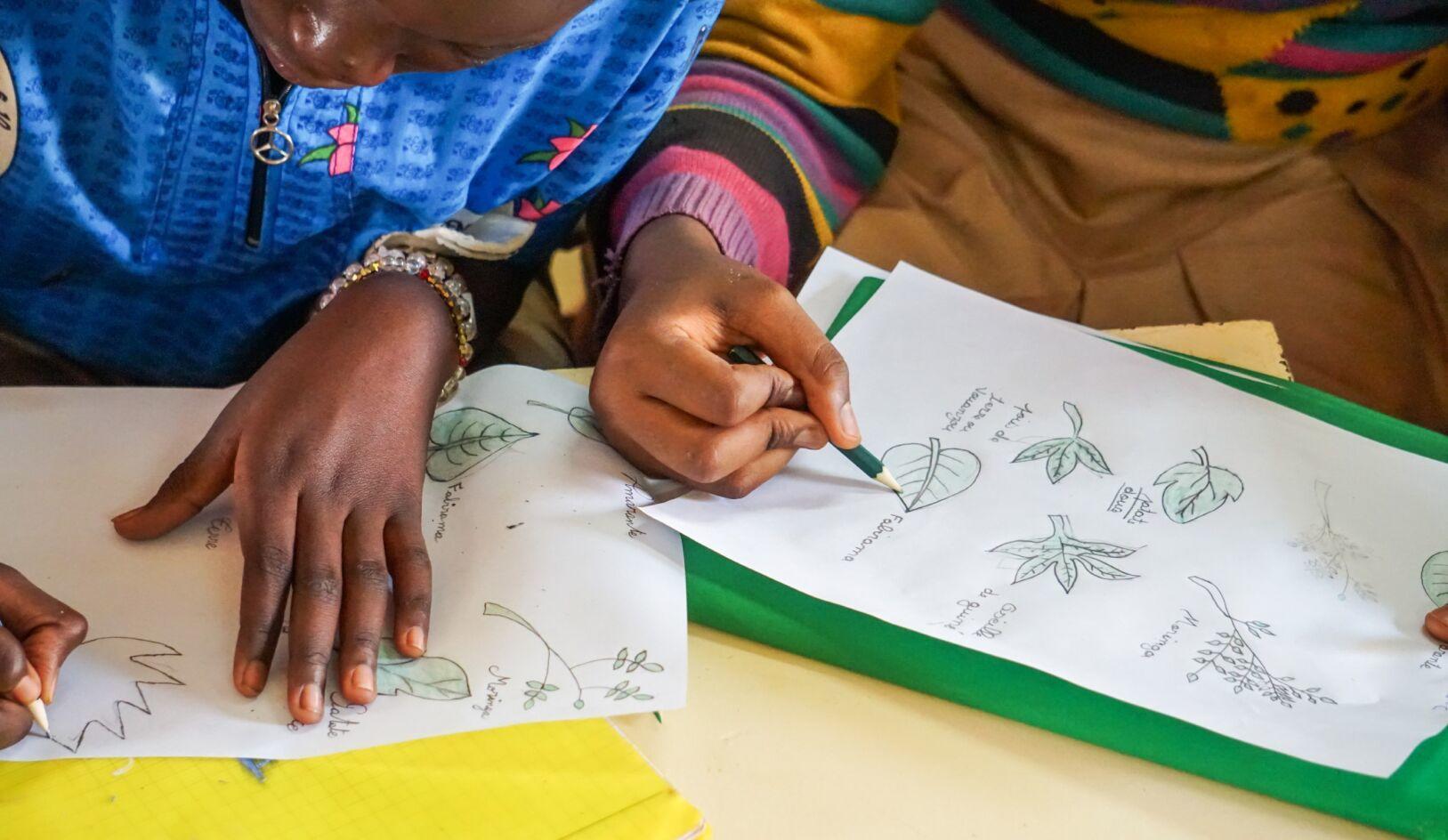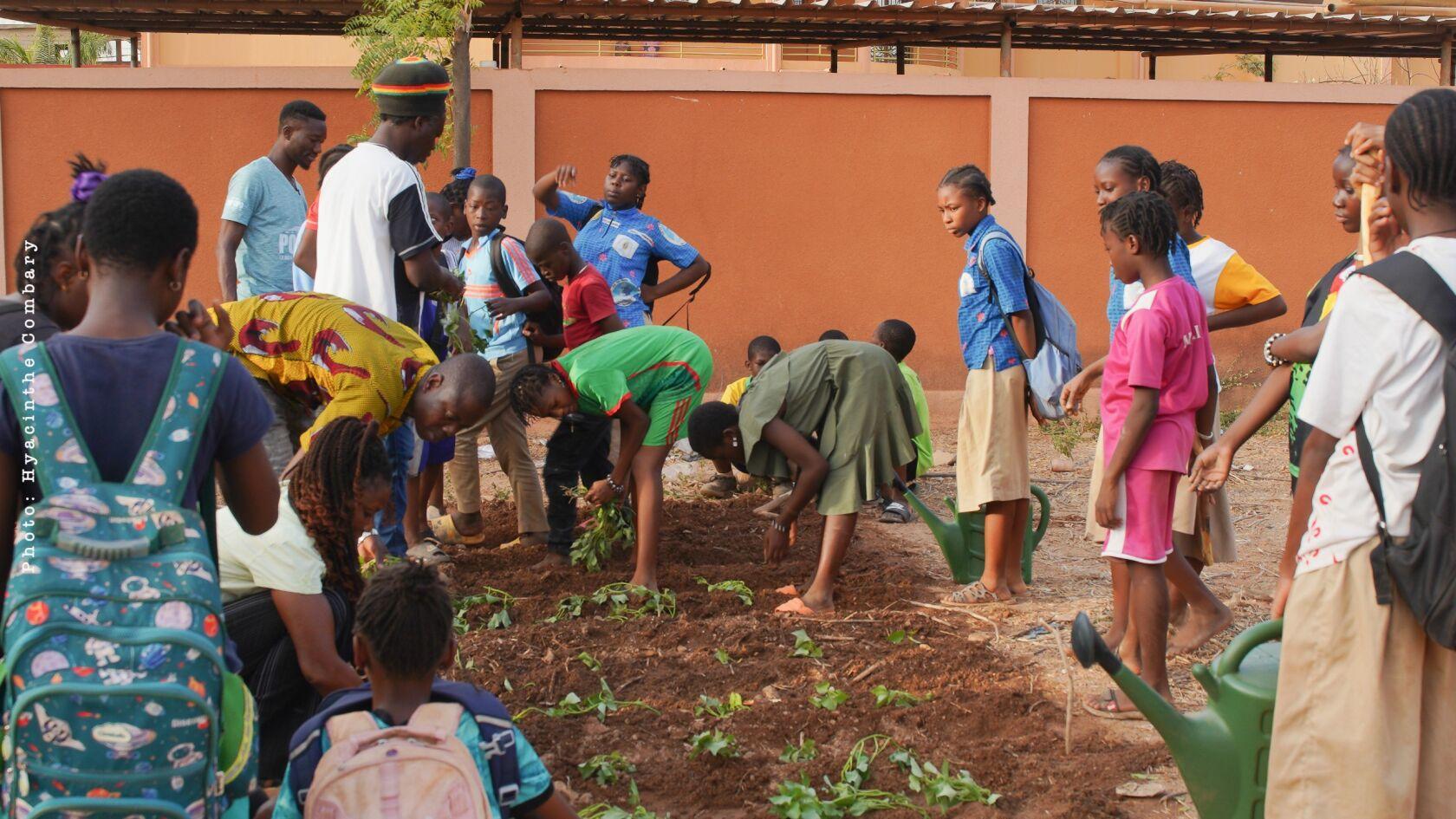It’s 3pm on a hot Wednesday afternoon at the School Complex Marie Immaculée in Ouagadougou. Sixty school children aged 10-12 are gathering at their desks to continue learning about regionally important and nutrient rich neglected and underutilized species (NUS). After learning about roselle and amaranth, today it’s the turn for Bambara groundnut, known locally as voandzou.
Meet the plant: A small leguminous crop, Bambara groundnut is native to West Africa and is rich in complex carbohydrates, plant-based protein, unsaturated fatty acids, and essential minerals (magnesium, iron, zinc, and potassium). Its seeds are harvested underground, much like peanuts, and can be eaten fresh, dried, or ground into flour. Considered a “complete food” due to its balanced macronutrient composition, including it in diets can help reduce protein deficiencies in areas where animal proteins are rare or expensive and where growing conditions are harsh. Bambara groundnut can in fact grow in resource poor soils where other legumes fail, is drought-tolerant and resistant to pests and diseases. As a legume, the crop also fixes atmospheric nitrogen replenishing soil nutrients. Yet, despite its impressive nutritional and agroecological profile, Bambara groundnut has yet to meet its full potential.


